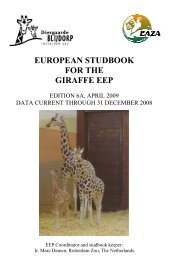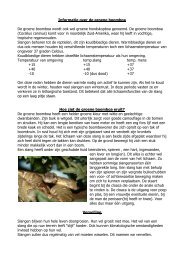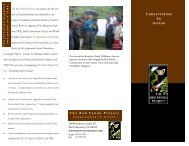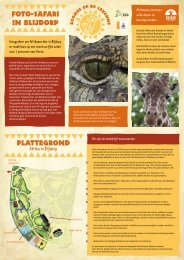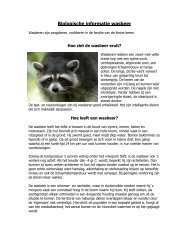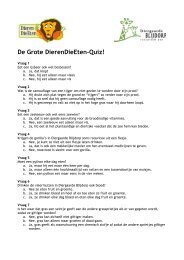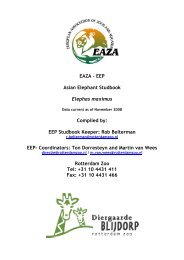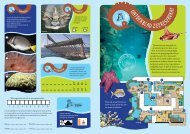You also want an ePaper? Increase the reach of your titles
YUMPU automatically turns print PDFs into web optimized ePapers that Google loves.
<strong>EEP</strong> STUDBOOK CROWNED PIGEONS<br />
of grass, sedges and shrubs. With increasing altitude the forest patches and the trees<br />
themselves become smaller and smaller and finally peter out around 3900 m.<br />
Lowland and hill forests are further subdivided into northern and southern regions because the<br />
central mountain chain which runs from one end of the island to the other forms a barrier as<br />
there are no low altitude passes from north to south. These zones each have some<br />
characteristic animals while other animals are widespread through several zones (Menzies,<br />
1991).<br />
Climate<br />
The climate is tropical and monsoonal with only two seasons, the wet and the dry.<br />
Temperatures vary significantly between the coast (20-35 °C) and the highlands (10-30 °C).<br />
Rainfall varies from 40 inches (40 x 2.54 cm) per annum in port Moresby to over 200 inches<br />
(5 meters) per annum in some localities (UBD, 1997).<br />
Flora<br />
With the generally humid and benign climate, it is not surprising that the native vegetation in<br />
most of the region is rainforest. From extrapolation data available from eastern New Guinea,<br />
it has been calculated that undisturbed native forest cloacks nearly 70 percent of the available<br />
land area (Campbell-Jones, 1995), which is a humid forest, for 58 percent. Savanna makes up<br />
for only 7 percent of New Guinea’s vegetation (Beehler, et al., 1986). Botanists have termed<br />
the flora “Malesian”, because of its part Asian, part Melanesian, origin.<br />
The lowland rainforest is structurally and taxinomicaly complex, usually with a high richness<br />
of species. A typical hectare sample would show dozens of families of trees. Canopy height<br />
reaches 40 m or higher, and vertical structure is complex, with a subcanopy of saplings,<br />
pandanus, palms, lianas, creepers and so on.<br />
Of course, as one ascends to higher altitudes, one finds gradual changes in forest structure and<br />
species composition. In mountainous country, the variables of slope, drainage, and natural<br />
succession brought about by land-slips produce mosaics of vegetatin types.<br />
Apart from these humid forest vegation there are other specialized habitats of restricted<br />
distribution, like the mangrove forests along the coastal areas, seasonal monsoon forests, at<br />
the edges of drier zones, savanna and open woodland wherever there is a long and severe dry<br />
season (Beehler, et al., 1986).<br />
Man-related alteration of the environment, although relatively limited in New Guinea, has<br />
nevertheless produced significant changes. Most prominent are the grasslands, which have<br />
developed in long-settled areas of the highlands and, less frequently, in lowland areas. In<br />
many areas, with increasing development, the tracts of grassland surrounding settlements<br />
continue to expand, with the local forest retreating. Demands for housing material,<br />
commercial timber, and firewood all act to create large areas of open habitat near permanent<br />
settlements. In both the highlands and the lowland grasslands, the bird communities are<br />
impoverished (Beehler, et al., 1986).<br />
124



